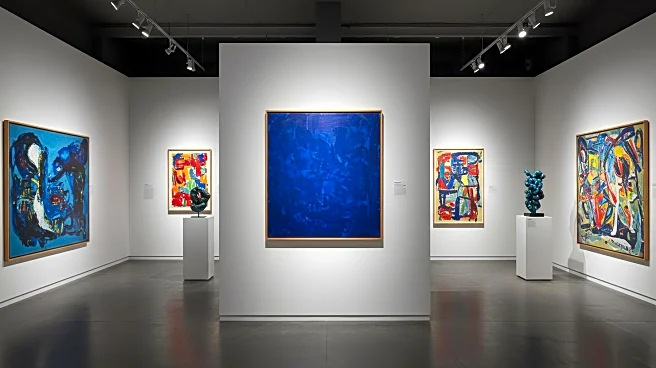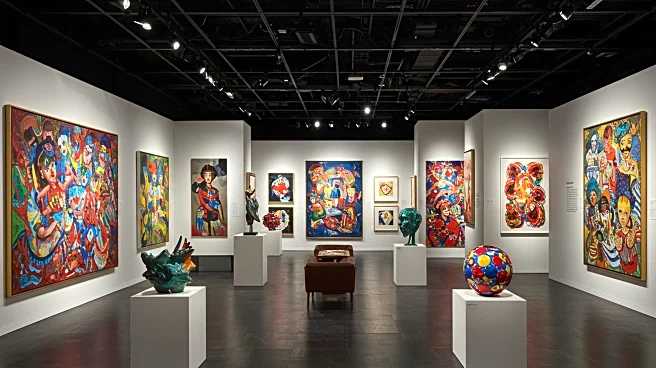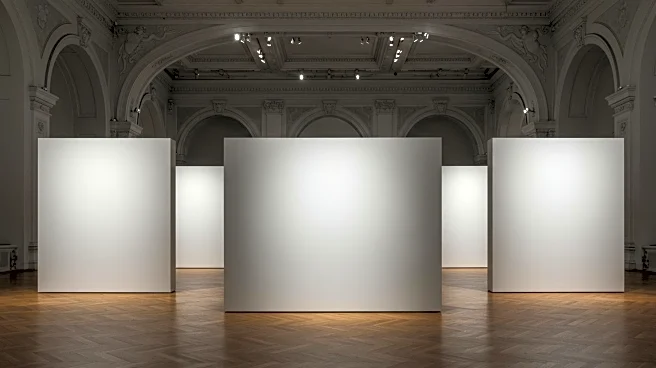What's Happening?
Artist Lily Stockman is set to unveil her latest series of paintings, titled 'Book of Hours,' at the Charles Moffett gallery in Tribeca this September. Stockman's work is inspired by medieval books of hours, particularly the 15th-century illuminated manuscript known as The Black Hours. Although she has never seen the manuscript in person, its unique darkened vellum pages and ornate religious scenes have influenced her abstract paintings. Stockman, who works from her studio in Glassell Park, Los Angeles, incorporates elements of nature and geometry into her art, drawing from her upbringing on a hay farm in New Jersey. Her new series continues to explore these themes while also embracing visible brushstrokes and the imperfections of her creative process.
Why It's Important?
Lily Stockman's work represents a fusion of historical and contemporary art, bridging the gap between medieval manuscripts and modern abstract painting. Her approach highlights the enduring influence of historical art forms on contemporary artists, offering a fresh perspective on how ancient techniques and aesthetics can be reinterpreted today. This exhibition not only showcases Stockman's unique artistic vision but also contributes to the broader dialogue about the relevance of historical art in modern times. The show is likely to attract art enthusiasts and collectors interested in the intersection of history and modernity, potentially influencing trends in the art world.
What's Next?
The 'Book of Hours' exhibition will open in September at the Charles Moffett gallery, providing an opportunity for art lovers to experience Stockman's work firsthand. The gallery's new space in Tribeca is expected to draw significant attention, given Stockman's reputation and the unique inspiration behind her latest series. As the exhibition unfolds, it may spark further interest in medieval art influences and inspire other artists to explore historical themes in their work. The reception of Stockman's paintings could also impact her future projects and collaborations within the art community.
Beyond the Headlines
Stockman's decision to leave visible traces of her artistic process in her paintings challenges the traditional pursuit of perfection in art. This approach invites viewers to appreciate the labor and decision-making involved in creating art, fostering a deeper connection between the artist and the audience. By embracing imperfections, Stockman encourages a more authentic and humanized view of art, which could influence broader cultural attitudes towards creativity and craftsmanship.












